- Home
- Travel
Back on table: $5 billion road, rail link between India and Sri Lanka
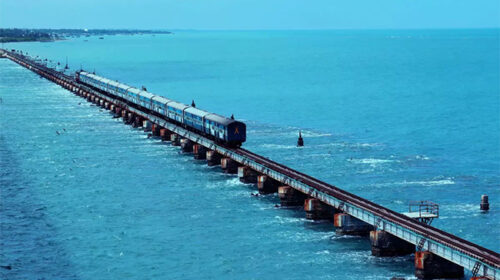 Discussions are in the final stages for a $5 billion road-and-rail link between India and Sri Lanka with India set to bear the cost of the strategic project, said the island-nation’s environment secretary Prabath Chandrakeerthi.
Discussions are in the final stages for a $5 billion road-and-rail link between India and Sri Lanka with India set to bear the cost of the strategic project, said the island-nation’s environment secretary Prabath Chandrakeerthi.
This is the first big bilateral infrastructure project announced by the island nation since the recent election of President Anura Kumara Dissanayake amid efforts by New Delhi to counter Chinese influence.
India is Sri Lanka’s largest trade partner and one of the largest foreign direct investment (FDI) contributors. Indian investment in Sri Lanka amounted to about $142 million in 2021.
“Last month I participated in one meeting with India in New Delhi, and we are going to establish the highway and railway line connectivity between Rameswaram in India and Trincomalee in Sri Lanka,” B. K. Prabath Chandrakeerthi told Mint. “This is being planned as businessmen in both countries have to pay more and with the road and rail connectivity, both parties can get help because it will help in trade with European and other countries. Indian businessmen can also get some benefits from Sri Lanka as well,” Chandrakeerthi added.
“Last month I participated in one meeting with India in New Delhi, and we are going to establish the highway and railway line connectivity between Rameswaram in India and Trincomalee in Sri Lanka,” B. K. Prabath Chandrakeerthi told Mint. “This is being planned as businessmen in both countries have to pay more and with the road and rail connectivity, both parties can get help because it will help in trade with European and other countries. Indian businessmen can also get some benefits from Sri Lanka as well,” Chandrakeerthi added.
The Sri Lankan government proposed a land bridge between Rameswaram in Tamil Nadu of India and Talaimannar, a village in Mannar Island of Sri Lanka in 2002 and signed an agreement on it.
As per the agreement, road and rail bridge links were to be developed, offering economic benefits to both sides of the Palk Strait. However, after the agreement was signed, the Tamil Nadu government opposed the construction of the land bridge.
As per the agreement, road and rail bridge links were to be developed, offering economic benefits to both sides of the Palk Strait. However, after the agreement was signed, the Tamil Nadu government opposed the construction of the land bridge.
The talks resumed in 2015 when Indian asked the Asian Development Bank to carry out pre-feasibility study for financing a road and rail link between
India’s Rameswaram and Sri Lanka’s Talaimannar. But it has been decided to build the rail and road link up to Trincomalee, the official informed.
There is no land connection between Sri Lanka and India through road or railway. The closest Indian town to Sri Lanka, Dhanushkodi, had a railway station but this was washed out in a cyclone in 1964. A short boat ride till 1966 connected the railway stations at Talaimannar in Sri Lanka and Dhanushkodi in India.
“The cost of the project is still not finalized. We have to have more discussion about that, but I think it is estimated to be nearly $5 billion,” the Lankan official said, and added: “It will entirely be borne by the Indian government. We have to get some approval for environmental clearance.”
He said the project may involve bridges and underwater tunnels to allow unhindered movement of ships.
Queries sent to the spokespeople and secretaries of Indian road transport and highways, ports, shipping and waterways, railways, external affairs and environment ministries remained unanswered at press time.
Source: Mint
–Agencies
https://www.adaderana.lk/news.php?nid=102699
Add YourBack on table: $5 billion road, rail link between India and Sri Lanka Heading Text Here

Back on table: $5 billion road, rail link between India and Sri Lanka
Indo-SL passenger ferry service to resume mid-May
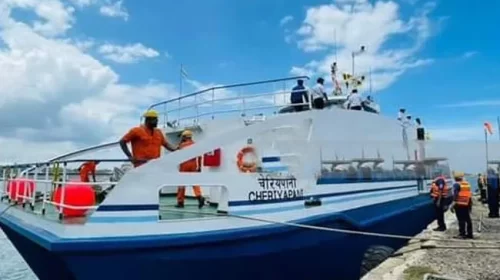 The passenger ferry service between Nagapattinam, India, and Kankesanthurai (KKS) in Sri Lanka, which resumed in October of last year (2023) after almost 40 years, only to be stopped days later, is set to recommence on 13 May.
The passenger ferry service between Nagapattinam, India, and Kankesanthurai (KKS) in Sri Lanka, which resumed in October of last year (2023) after almost 40 years, only to be stopped days later, is set to recommence on 13 May.
Online ticket sales for the service, which will be handled by a new operator, will go live on 6 May.
On 14 October 2023, Prime Minister Narendra Modi virtually flagged off the service between Nagapattinam and KKS. The high speed craft Cheriyapani operated by the Shipping Corporation of India under KPVS Private Limited however, stopped the service after about a week, allegedly due to the monsoon. After a gap of six months, the service is set to resume. This time though, a Chennai-based travel operator, IndSri Ferry Services Pvt. Ltd., would handle the international service through the ship, ‘Sivagangai’.
“The service will be offered daily. Ticket sales open from 6 May through our website www.sailindsri.com for voyages between 13 May and 15 November,” said IndSri Ferry Services Managing Director S. Niranjan Nanthagopan. A ticket from the Nagapattinam Port to KKS is currently priced at $ 50 plus taxes. The pricing is the same for the return service.
Passengers are allowed to carry 60 kilograms of baggage on board without charges. Further, they are allowed to change their date of travel 72 hours before the scheduled trip. Full refund is also available on cancellation only during the said period.
(The New Indian Express)
https://www.themorning.lk/articles/soo53ZCN1wH8ypxW8WLS
Restoring Ferry Service Will Rewrite History of India-Lanka Ties
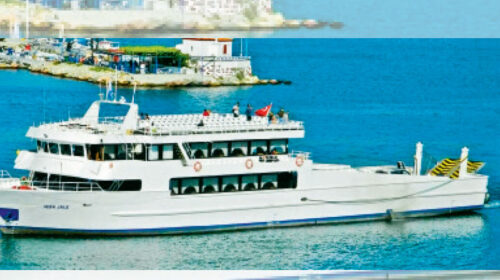 The ferry service between India and Sri Lanka, as well as railway connections, have all but vanished since the turn of the 19th and the 20th centuries, and the use of a comfortable Singaporean passenger vessel ‘IndSri‘ to sail between Karikkal (KKL)Port in South India and Kankesanthurai (KKS) Port in Sri Lanka’s Northern Province next month (Mid-May), will rewrite the history of sea connections between Indo-Sri Lanka.
The ferry service between India and Sri Lanka, as well as railway connections, have all but vanished since the turn of the 19th and the 20th centuries, and the use of a comfortable Singaporean passenger vessel ‘IndSri‘ to sail between Karikkal (KKL)Port in South India and Kankesanthurai (KKS) Port in Sri Lanka’s Northern Province next month (Mid-May), will rewrite the history of sea connections between Indo-Sri Lanka.
There was formerly a regular ferry service between India and Sri Lanka that served as an important mode of transportation for both people and cargo. However, with the collapse of the British Raj, severe cyclonic weather, and the civil war in Sri Lanka that began in 1983, the train and boat service was eventually rendered obsolete.
With the intervention of the Governments of India and Sri Lanka, IndSri Ferry Services will begin operations between KKS and Karaikkal (KKL) on 15 May, and the Indian Government has approved says operator Niranjan Nandagopan, MD, Indsri Ferry Services Pvt Ltd. He is a Singaporean who moved there from Jaffna in the early 1980s.
There are four other operators who have approached both governments. They are; Infinity Harbour Services, Mumbai, Drishti Cruise and Ferries Pvt Ltd, Goa, MOH Marine Transport Pvt Ltd, Chennai and KKL Terminal Operators Pvt Ltd, Bangalore. They are also waiting for approvals now.
The IndSri passenger ship will however, transport approximately 150 people between Kankesanthurai (KKS) and Karaikkal (KKL), with daily ferry services from Monday to Saturday departing at 8 a.m. from KKL and arriving at KKS at noon.
On the return journey, the ship will leave KKS at 2 p.m. and arrive at KKL at 6 p.m. with each passenger carrying 100 kg of free baggage allowance.
Ceylon is still the moniker given to Southern Indians, and in the 1970s it was the land of opportunity since the British assisted in the establishment of several tea plantations on the island, which just lacked the labour to run them. So, in the late nineteenth century, British authorities began examining the notion of joining the railway systems of the two colonies in order to facilitate the transportation of people and products between peninsular India and Ceylon.
History of the sea connection
Ajay Kamalakaran writes in 2021 the history of the railway and steamer connections between Indo-Sri Lanka in his article titled: “Boat Mail: Remembering the Train and steamer service from India to Ceylon”. He writes thus:
The first stage was to operate a train between Madras and Tuticorin. Passengers would then board the steamship bound for Colombo. This arduous journey, begun in the late 1800s, would take nearly two days, since the 709-km train ride lasted 21 hours and 50 minutes, while the ship linking the two ports would take somewhere between 21 and 24 hours.
To connect India and Ceylon, the British decided to construct a bridge over the Palk Strait in the 1870s. The plan was to connect peninsular India, Pamban (Rameshwaram) Island, Mannar Island, and the remainder of Ceylon with a series of bridges over the Adam’s Bridge or Rama Setu, establishing a continuous railway link between Colombo and India.
The longest bridge in this chain, according to a research report by Delphine Prema Dhanaseeli, would have been roughly 24 km long and would have connected Thalaimannar at the edge of Ceylon’s Mannar Island to Dhanushkodi at the tip of Pamban Island. The British Raj largely rejected the project but gave Rs 70 lakhs to build the Pamban Bridge, which would link Rameshwaram on the mainland with Mandapam.
The bridge’s construction began in 1902 and was planned by renowned American engineer William Scherzer, who is best known for developing the rolling lift bridge. For the bridge, which needed 2,000 tonnes of steel, manufactured materials were brought from England. The 65.23-metre-long rolling-type lift span, which can open up when vessels pass, was designed and built by Scherzer because engineers wanted to have a rail link without interrupting the ferry service, according to Dhanaseeli.
Natural disasters like cyclones and cholera epidemics played down construction. In 1913, the 2,065-metre-long bridge was completed. The bridge was opened on 24 February 1914. It was the first sea bridge in India and the longest until Mumbai’s Bandra-Worli Sea Link was erected in the 21st century.
The inauguration is believed to have been grand for the British Empire, with the foreign press invited to a ceremony presided over by John Sinclair, Governor of Madras, and Robert Chalmers, Governor of Ceylon, as well as Neville Priestley, MD, South Indian Railways. The railway and steamer service between the two countries, known as the Indo-Ceylon Express, was widely publicised on a global scale. It was known as the ‘Boat Mail’ service.
From Egmore, the Boat Mail would travel to the Dhanushkodi Port. As soon as the passengers exited the train, immigration procedures were followed. Passengers from India and Ceylon would receive passports for the steamer after undergoing a basic health examination. For those going from Talaimannar to India, the formalities were the same.
In the beginning, the British held a monopoly on the steamer service, transporting passengers on ships named after viceroys like Irwin. However, Indian rivals later entered the market, and Sri Lankans who travelled on the ships in the 1940s and 1950s remember fondly of the ‘Madras Maru’ steamship.
The train held 300 passengers and had 12 cabins in 1914. The train ride from Talaimannar to Colombo used a wide gauge, whereas the portion in India used a metre gauge. Along with the three-class system of train travel in the subcontinent, the Boat Mail also included a separate wagon for Buddhist monks. Tickets were printed in English, Tamil, and Sinhalese. With time, Sinhalese Buddhist travellers started taking the train to Madras before continuing on the wide railway network of India to Bodh Gaya, Sarnath, and other locations significant to the life of the Buddha. Additionally, Tamil pilgrims from both nations would board the train to travel to Rameshwaram, to connect to other cities where Hindu temples were.
The train service persisted after British authority in South Asia ended. In the 1950s, it took just over 19 hours to travel the 675 km from Egmore to Dhanushkodi. The train would leave Madras at eight o’clock at night and get there at three the next day. Within an hour, the immigration procedures would be through, and after that, the three-and-a-half-hour trip to Talaimannar would start. Those travelling to Colombo would then board the Talaimannar Fort Night Mail, which departed from the pier, traversed the causeway, and wound its way through the Northern regions of Sri Lanka with a preponderance of Tamil people into the Centre and Southern regions of the island, crossing across picturesque waterways like Deduru Oya and Maha Oya.
The Indo-Ceylon Express kept running routinely well into the 1960s, but on the evening of 22 December 1964, Dhanushkodi was devastated by a cyclone that was believed to have winds of 280 kph and tidal waves as high as 23 ft.
The No. 653 passenger train left Rameshwaram towards Dhanushkodi that very same evening. A typhoon was wreaking havoc on the town, but its loco pilot was unaware of it. The train, which had 110 passengers and five railroad employees on board, was hit by a powerful tidal surge and sank into the ocean as it approached the Dhanushkodi railway station. On the train, not a single person made it out alive.
The cyclone wreaked havoc in both Mannar and Dhanushkodi, with an official death toll of 1,800 in the latter. The railway line, as well as all of the structures in Dhanushkodi, were completely destroyed. Dhanushkodi, once an important transit town between India and Sri Lanka, has become a ghost town. The cyclone altered the route taken by travellers between Madras and Colombo. Passengers travelling between Tamil Nadu and Northern Sri Lanka shifted to the Rameshwaram-Talaimannar ferry route, which remained popular until 1983 when the Sri Lankan civil war broke out and it ended the ferry service of all time.
The Kariakkal Port
Karaikal Port is located on India’s Eastern coast, roughly 300 km south of Chennai, in the Karaikal District of Puducherry State. It is now taken over by India’s business tycoon Adani Group.
The port is located in Vanjore Village, Karaikal Taluk, Puducherry. Karaikal Port Private Ltd. (KPPL) is an all-weather deep water port constructed as part of a concession granted by the Government of Puducherry. Karaikal Port, which launched in April 2009 and covers an area of 600 acres, is located near the town of Karaikal in the Union Territory of Pondicherry, India.
Nandagopan, a ferry operator, also discusses ferry services between South India and Sri Lanka. He is descended from a family that operated ferries between Kytes and Vedaraniyam in Tamil Nadu. He stated that his forefathers ran ferries between the two countries about 120 years ago and had three boats.
He went on to state that one ferry sank and that two ferries were sold, with settlements made for those who lost property on the sunken ferry. In Kytes there is a place called Madaththadi and a century ago when my ancestors were operating a ferry service people gather at that place. They carried goods to Tamil Nadu and brought goods for trading, he said.
Because his ancestors were involved in boat operations, he has chosen to finance the ferry service today.
There are numerous hotels available for travellers to stay in before taking the ferry, and KKK is just 20 minutes from Jaffna Town, according to Nandagopan. The Karaikal District, on the other hand, is one of the four divisions of the Union Territory of Puducherry. It is around 135 km east of Pondicherry (two hours) and 300 km south of Chennai (about eight hours). The Union Territory of Puducherry consists of the former French colonies of Puducherry, Karaikal, Mahe, and Yanam.
By R.R.M. Lilani
Restoring Ferry Service Will Rewrite History of India-Lanka Ties
CBSL Chief says Indian tourists to Sri Lanka can pay in INR
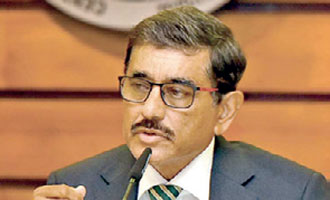 Central Bank Governor Dr. Nandalal Weerasinghe yesterday said that Indian tourists to Sri Lanka pay in their currency Indian Rupee (INR).
Central Bank Governor Dr. Nandalal Weerasinghe yesterday said that Indian tourists to Sri Lanka pay in their currency Indian Rupee (INR).
He reiterated that making INR a designated currency by the Central Bank of Sri Lanka enables not only trade settlement between the two countries in INR but also Indian tourists coming to Sri Lanka can use INR for transactions.
Dr. Weerasinghe also expressed support for the linking digital payment interfaces between the two countries during his keynote at the webinar on ‘Economic Scenario of Sri Lanka: Current Status and Way Ahead’, organised by the Federation of Indian Chambers of Commerce and Industry (FICCI).
During the first 23 days of April India topped the tourist inflow reflecting 17% or 13,839 whilst year to date Indians accounted for second highest 14% or 60,271 arrivals.
Remarks by the CBSL Governor come a day after Prime Minister Dinesh Gunawardena launched a Special Cover commemorating Sita Temple (Seetha Eliya) in Nuwara Eliya. The Temple is believed to mark the place of Ashok Vatika in the epic Ramayana and is a great hit with Indian tourists, as part of Ramayana circle which the Sri Lankan Government is seeking to promote. Tourists from India traditionally constitute the largest segment of international tourists coming to Sri Lanka.
Delivering a special address the Indian High Commissioner Gopal Baglay highlighted the areas of prospective economic cooperation between India and Sri Lanka. He particularly focused on connectivity, IT, renewable energy and tourism.
https://www.ft.lk/front-page/CBSL-Chief-says-Indian-tourists-to-Sri-Lanka-can-pay-in-INR/44-747699
Sri Lanka expects to tap tourism niche, trade with India ferry service
ECONOMYNEXT – Sri Lanka is expecting widen tourism and trade links with the start of a ferry service between the two countries from April 29, which is cheaper than air travel and has a higher baggage allowance officials said.
Sri Lanka’s Ports Ministry has started to build a passenger terminal in Kankasanthurai (KKS) port in the northern Jaffna peninsula with the help of the Sri Lanka Navy at a cost of 144 million rupees to support the ferry service.
The ferry service will operate between KKS and Karaikal Port in Pondicherry, India.
“There are private ferry owners who operate the services, and at the moment, there only three ferry operators,” Viraj Abeysinghe, the Media Secretary of the Ministry of Ports, Shipping, and Aviation, told Economy Next.
“However, we, as a ministry, provide infrastructure facilities only. A ferry will carry 150 passengers at a time and will take around a 4-hour journey from Karaikal Port to KKS Port.”
The charges will start from 50 US dollars per passenger for a one-way trip, which is roughly around 16,075 rupees, and a baggage allowance of 100 kilos will be permitted.
The charges will start from 50 US dollars per passenger for a one-way trip, which is roughly around 16,075 rupees, and a baggage allowance of 100 kilos will be permitted.
“The ferry service will cater to a different sector of the market because it is going to be cheaper than traveling by air,” Priyantha Fernando, Chairman of Sri Lanka Tourism Development Authority, told Economy Next.
“So we are opening up to a different segment of the market, and it will definitely make a positive contribution.
“This will definitely help tourism, and it will also help commercial activity because the baggage allowance is much greater, and there will be trade taking place between India and Sri Lanka.”
Entrepreneurs from Sri Lanka and India are encouraged to join this opportunity.
The service will also open up the way for export and imports for cheaper prices, which can indirectly benefit the country, he said. (Colombo/Apr21/2023)
Sri Lanka expects to tap tourism niche, trade with India ferry service
India-Lanka ferry service is still on rocky seas
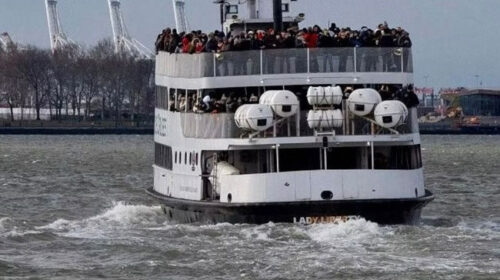 The chances of having a ferry service between India and Sri Lanka by the end of this year seem likely provided both India and Sri Lanka are clear about the details
The chances of having a ferry service between India and Sri Lanka by the end of this year seem likely provided both India and Sri Lanka are clear about the details
Replying to the demands for grants for the departments concerned in the Tamil Nadu Assembly early this month, Highways and Minor Ports Minister E V Velusaid that efforts are underway to launch a short ferry service between Rameswaram and Sri Lanka in a few months’ time. The idea is to link Rameswaram and Talaimannar first, covering a distance of 50 kilometres. This will be followed by another ferry service, linking Rameswaram and Kankesanthurai (KKS),a distance of 100 km.
Accordingly, the Tamil Nadu Maritime Board has sent a detailed project report to the Union government for approval, the minister said.“The Rameswaram minor port does not have facilities. The State has been in touch with the Union Government, which is keen on starting the project and is ready to fund the development of the port, costing INR10-15 crores, to launch the ferry service,”news reports have since quoted Tamil Nadu officials. Accordingly, the Ministry of External Affairs (MEA) and the Union Ministry of Shipping and Waterways have agreed to the project, the report claimed. “The ferry can go at a speed of 30 knots between Rameswaram and Talaimannar,” the Times of India report said. “With a 150-passenger seating capacity, the travel time will be one and two hours to Talaimannar and Kankesanthurai, respectively. The sheltered waters of Palk Bay would aid the project”, the report added.
The Union and State governments in India, and also Sri Lanka are on the same page as regards launching ferry service,” an official told the newspaper.
This followed a recent video conference involving officials of the Sri Lankan High Commission in New Delhi, the MEA and India’s Ministry of Port, Shipping and Waterways, and also the Tamil Nadu Government, according to the news report. The Union Government will accordingly float ‘Expression of Interest’ to identify operators to operate from Rameswaram, it added. “The state government is interested in readying the entire project in six months. The construction of the Rameswaram jetty is the only bottle-neck. The Union and State governments in India, and also Sri Lanka are on the same page as regards launching ferry service,” an official told the newspaper.
Inherent contradiction
However, an inherent contradiction is discernible in the official positions of the Tamil Nadu government and that of its Sri Lankan counterpart. It relates not only to the chosen route but also the timing of the ferrylaunch.
According to NimalSiripala de Silva, Sri Lanka’s Minister of Shipping, Ports and Aviation, the ferry service would be launched not on the routes mentioned by the Tamil Nadu minister, but on the Kankesanthurai-Karaikal route, the latter being an enclave of the Union Territory of Puducherry. It will be launched as early as 29 April this year, a Sri Lankan Shipping Ministry statement said further.
As discussed between the Minister De Silva and India’s MEA on 26 March, two immigration and emigration offices, one each in Kankesanthurai and Karaikal, would be set up for this purpose, and preliminary measures have already commenced in this regard. The immigration office at the KKS jetty and the port are fully operational and ready to start, Minister De Silva said. The minister also clarified that neither government would provide the ferry to operate the service. Instead, India’s MEA will float tenders for operators with boats having a carrying-capacity of 150 passengers to operate the service. Considering that traders from Tamil Nadu and Sri Lanka’s North and East are the targeted segment, the baggage allowance, put at 100 kgper passenger, will be an attraction. The one-way ticket charge is also proposed at an affordable US$ 50 per passenger, though it would be for the selected ferry operator to fix the ticket-cost.
Restoring ‘Boat Mail’
Earlier, at a meeting with MEA’s Joint Secretary (IOR) Puneet Agrawalin Colombo in December last year, Minister De Silva requested early commencement of the ferry service.At the meeting, Sri Lanka sought increasing the quantum of India’s concessional loan for developing the Kankesanthurai Port, attributing the higher cost to fluctuation in the price of construction material. It was over and above the US$ 45.27-million Indian assistance granted in 2018 for upgrading the KKS Harbour into a commercial port and for strengthening the country’s efforts to become a regional maritime hub.Public sector Dredging Corporation of India has already deepened the KKS Harbour. India has also funded the dredging of the approach channel, with the larger cargo ferries in the future in mind.
The one-way ticket charge is also proposed at an affordable US$ 50 per passenger, though it would be for the selected ferry operator to fix the ticket-cost.
At the time, the choice of destination on the Indian side had shifted from Karaikal to Puducherry, after it was found that the private port at the former site was facing bankruptcy proceedings. Ferry operators also reportedly indicated that the longer trip to Puducherry could cause sea-sickness among passengers unused to sea-travel. Hence, the decision was to run the ferry service reportedly between Kankesanthurai and Nagapattinam in Tamil Nadu, not far away from Karaikal.
However, the bankruptcy proceedings seems to be in the concluding phase, with one private operator, Adani Group, likely to take over from another, Marg, in the none-too-distant future. This could then entail the possibility of the Sri Lankan minister’s announcement coming true, though not by the month-end. Whichever the Indian destination that New Delhi finalises, as long as the clearances and works are completed in time, the chances are bright for the ferry service commencing operations at the end of the north-east monsoon cyclone season by the year-end.
The Sri Lankan statement of December also quoted Indian official Agarwal as underlining the appropriateness of reviving the long-forgotten passenger ferry service between Dhanushkodi in Sri Lanka and the temple-town of Rameswaram in Tamil Nadu. Minister De Silva agreed to the proposal and also emphasised that the Sri Lanka railway service can also be connected with the passenger ferry service, and thus revive the pre-Independence, Colombo-Chennai train travel by the ‘Boat Mail’, with an intervening ferry trip from Danushkodi / Rameswaram to Talaimannar in Sri Lanka.
The bankruptcy proceedings seems to be in the concluding phase, with one private operator, Adani Group, likely to take over from another, Marg, in the none-too-distant future.
The ‘Boat Mail’was diverted from original Danushkodi point to Rameswaram after a train full of passengers and also the railway station and the pier were all washed away in a cyclone in 1964. The Rameswaram-Talaimannar service also went on long hibernation in 1984, after sea-based Tamil militancy of the LTTE’s ‘Sea Tigers’ made those waters unsafe.
Trade and tourism
According to the recent Times of India report, there are also plans to include partial cargo service in the next phase of the Rameswaram-centred ferry service. Subsequently, cargo services will be allowed from Rameswaram to Sri Lanka with 300-500 tonne capacity. “The State Government has already sent a detailed proposal worth INR600 crore to have a bigger facility to the Union ministry of shipping and the discussion is going on,” the official said.
Sri Lanka is steadfast with Kankesanthurai as their entry port for the ferry service to Tamil Nadu. The Indian port-of-call is yet to be finalised by the Government of India and Tamil Nadu through consultations. Going by the Tamil Nadu minister’s statement in the State Assembly, some basic issues need to be sorted out and for good—and early—so that whatever the route finalised in consultations with Sri Lanka, it should become operational as early as possible.
Independent of all this, there is a huge scope for improving trade and tourism between the two countries, including religious tourism. As is known, ferry service works out cheaper than air travel, and there is also a limited adventure in sea-travel, especially with short cruise trips.Budget pilgrims from Tamil Nadu and the rest of Indiacan visit prominent Hindu places of worship, namely, the KeerimalaiNaguleswaram temple, and the Kathirgamam or Kataragama temple down South, which is of religious significance to both Hindus and Buddhists. That is also when budget tourist operators enter the scene.
Going by the Tamil Nadu minister’s statement in the State Assembly, some basic issues need to be sorted out and for good—and early—so that whatever the route finalised in consultations with Sri Lanka, it should become operational as early as possible.
Likewise, pilgrims from Sri Lanka will have easy access to Velankanni church, Nagore dargah, Tirunallar Saneeswaran temple and other places of religious importance in the Cauvery delta districts, which are dotted with other Hindu temples all across, with easy access to Madurai Meenakshi Amman temple and Palani Murugan temple. Budget pilgrims from Sri Lanka’s majority Buddhist community can also take the ferry service to travel all the way up to Bodh Gaya, Sarnath and other religious centres, and also Lumbini, the birth-place of Lord Buddha in Nepal.
Incidentally, Sri Lanka’s Sinhala-Buddhists are also ardent devotees of Lord Venkateswara in Tirupati. As may be recalled, Buddhist temples in Sri Lanka invariably have separate shrines for Lord Ganesha and Lord Vishnu. In turn, all these can then help the revival of the Boat Mail, with Indian railways considering the extension of it all the way to Bodh Gaya and Sarnath, apart from Buddhist pilgrim centres and other places of tourist interest, en route.
https://www.orfonline.org/expert-speak/india-lanka-ferry-service-is-still-on-rocky-seas/
Karaikal-KKS ferry service to commence on 29 April
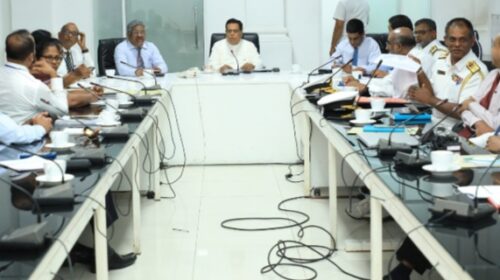 Minister of Ports, Shipping and Aviation, Nimal Siripala de Silva said the first ferry line, of the new ferry service, to be operated between Karaikal Port in Puducherry, India and Kankesanturai (KKS), is scheduled to call at the KKS Port on 29 April.
Minister of Ports, Shipping and Aviation, Nimal Siripala de Silva said the first ferry line, of the new ferry service, to be operated between Karaikal Port in Puducherry, India and Kankesanturai (KKS), is scheduled to call at the KKS Port on 29 April.
The Minister disclosed this information at a discussion, with the stakeholders of this new ferry service, held recently at the Ministry.
A passenger terminal was built at the KKS Port as part of infrastructure development for the new ferry service. The Sri Lanka Ports Authority (SLPA) has provided a financial facility of Rs 144 million for construction carried out by the Sri Lanka Navy.
The initial construction phase of the passenger terminal has already been initiated by the SL Navy and will be handed over to the SLPA by the second week of April, following completion.
The ferry service owners at the discussion revealed that USD 50 will be charged from a passenger for a one-way trip and a baggage allowance of 100 kg will be permitted.
A ferry will carry 150 passengers at a time and will take around 4 hours to reach KKS from Karaikkal Port. Ferry service owners emphasised that only day time services will be operated initially. The Minister said as the ferry service has been launched, any entrepreneur from Sri Lanka or India is welcome to invest.
The Minister also said besides the launch of the new ferry service, the expansion activities of the KKS Port will be expedited.
“As the credit line from India for this construction is insufficient, an additional credit facility of USD 16 million has been requested from the Indian Exim Bank,” the Minister said.
Karaikal-KKS ferry service to commence on 29 April
SL lays tracks for a Miracle Journey commences on Valentine Day
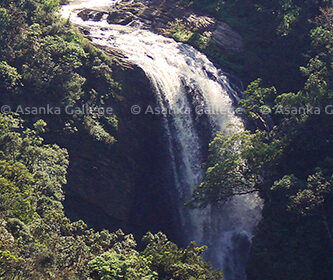
Ceylon Miracle Journeys Pvt Ltd together in partnership with Sri Lanka Railways and the Ministry of Tourism have embarked on a new journey that offers passengers an iconic rail experience to the misty mountains of Ella in five- star comfort.
The luxury rail service will commence on the 14th February 2023.
The breathtaking experience offered in a premium luxury train will leave every Tuesday at 5.30am and will arrive at Ella 4pm at Badulla, while the five star train will leave to Colombo on the following day at 6am and will arrive at 6pm.
A star-class breakfast, lunch and tea will be served on route and is included with the price of the 99.99 dollar ticket.
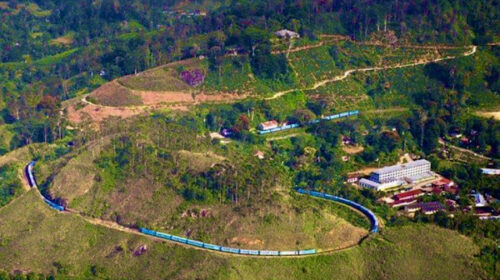
On route the train will slow down at iconic locations such as Rambukkana, the Predeniya Junction, a surprise cultural show at the iconic Kandy railways station, Nawalapiriya, Hatton, St. Clair Waterfall, Nanu Oya, Elgin Waterfall near the Pattipola railway station, A 15 minute stop to sight the beautiful Nine Arches Bridge, and a ten minute stop at the Dremodara Loop.
Tickets can be booked online www.ceylonmiraclejourneys.com or from the corporate be office of Ceylon Miracle Journeys at 67/2, Negombo Rd, Peliyagoda or can contact them on 0113491000.
“Our new luxury rail service will offer passengers a new level of comfort, stunning scenery and utmost safety, while experiencing the natural beauties of Sri Lanka. I would like to thank Sri Lanka Railways and the Ministry of Tourism for supporting us towards bringing this vision into reality, while simultaneously strengthening the economy through this tourism-friendly initiative,” noted Manoj Gunaseelan, Marketing Director at Ceylon Miracle Journeys Pvt. Ltd
Sri Lanka targeting European travellers hit by gas prices, tourism minister tells Quest
 ECONOMYNEXT – Sri Lanka is looking to attract European tourists affected by rising gas prices in that region in the coming winter season, Tourism Minister Harin Fernando told CNN’s Richard Quest in an interview.
ECONOMYNEXT – Sri Lanka is looking to attract European tourists affected by rising gas prices in that region in the coming winter season, Tourism Minister Harin Fernando told CNN’s Richard Quest in an interview.
Speaking on CNN’s Quest Means Business programme Tuesday November 08 evening, Fernando said Sri Lanka has short and long term plans to revive the island nation’s crisis-hit tourism sector.
“The short term is jumping into India and getting all the Indians to come in to Sri Lanka… because there’s a massive middle class in India: ver 230 million travellers,
“We’ve got a lot of brands. MasterCard, etc, promoting Sri Lanka for the Indian market as well as the Bangladesh market,” he said.
The long term plan, said Fernando, is to target potential European tourists in the winter season as the continent goes through an energy crisis.
“We’re looking at Europe as, come winter, gas prices are going to be so high, it would be cheaper to come to Sri Lnaka and have a nice holiday and enjoy luxury on the beach and also work from home,” said Fernando.
Quest, who was in Sri Lanka in 2019, told Fernando that he will be back in the island soon for the CNN Business Traveller programme.
Tourism in Sri Lanka, one of the country’s biggest foreign exchange earners, has been devastated by multiple crises since 2019, from the Easter Sunday bombings and the pandemic to the prevailing currency crisis and the political turmoil it created.
The industry is slowly recovering, however, though hoteliers — particularly SMEs — have been hit hard. Fuel shortages, power cuts and a host of other issues have also been pointed out by sceptics as reasons for tourists to steer clear of Sri Lanka. The government, however, argues that many of these problems have been resolved or are in the process of being resolved with a slow but steady return to stability.
India, meanwhile, reamins the largest market for Sri Lanka’s tourism earrings. The highest tourist arrival of over 86,000 was from India in the first nine months of this year. That accounts for 16.5 percent of the total arrivals to Sri Lanka. The United Kingdom, Russia, Germany and France are followed by India respectively making the top five primary markets for Sri Lanka.
The Clarks Hotels and Resorts opens its first property in Sri Lanka
(Ceylon today 14th Sep 2022)
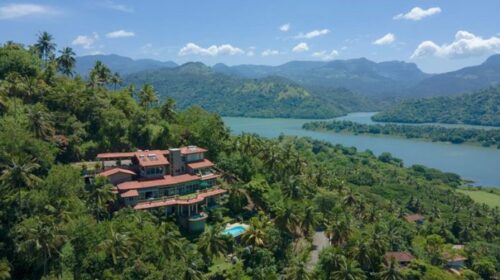 The Clarks Hotels and Resorts strengthens its footprints in Sri Lanka by opening The Albatross Golf Resort in Kandy. They are aiming to promote the country to Indian travellers and take advantage of the growing Sri Lankan business and leisure travel market. The brand is aggressively looking for expansion in the neighbouring country by opening properties in different key locations in Sri Lanka, a spokesman said.
The Clarks Hotels and Resorts strengthens its footprints in Sri Lanka by opening The Albatross Golf Resort in Kandy. They are aiming to promote the country to Indian travellers and take advantage of the growing Sri Lankan business and leisure travel market. The brand is aggressively looking for expansion in the neighbouring country by opening properties in different key locations in Sri Lanka, a spokesman said.
The Albatross Golf Resort Digana, Kandy by The Clarks is perched on top of ‘The Coconut Hill’ and has the Pidurutalagala peak as its backdrop. The property is in close proximity to an 18 hole golf course with breathtaking views of the hills and the Victoria reservoir. It is centrally located, and is in close proximity to the Temple of the Tooth in Kandy and the Pallekelle International Cricket Stadium. The resort is frequented by many well-known international golfers, celebrities, business tycoons, entrepreneurs, and international test cricketers, he added.
This upscale property has eight modern rooms divided into three categories – The Royal Albatross Suite, The Tee off Suite and Deluxe Rooms catering to guests from all over the globe. The Royal Albatross Suite provides a fascinating wide-span view of the famed Hunnasgiriya, Hanguranketha, Galaha and Piduruthalagala mountain ranges, a golf course, the Victoria Waterways and Dam. The magnificent suite boasts of a private balcony, jacuzzi, rain shower, butler service, and equipped with other modern amenities, he added.
Rahul Deb Banerjee, Vice President, The Clarks Hotels and Resorts said, “As a part of corporate strategy we are expanding both nationally and internationally. We are present in almost all the states of India and we recently have also opened a unique property in Sri Lanka. We are price conscious and believe in providing value for money to our travelers. This is the best time to be in the tourism industry, with the Sri Lankan government pushing tourism, and the pandemic has changed the attitude towards traveling, coming days will witness a further increase in tourism. We are also now promoting Sri Lanka and The Maldives as our new international destinations.”
This is the best time to be in the tourism industry, with the Sri Lankan government pushing tourism, and the pandemic has changed the attitude towards traveling, the coming days will witness a further increase in tourism, he added.